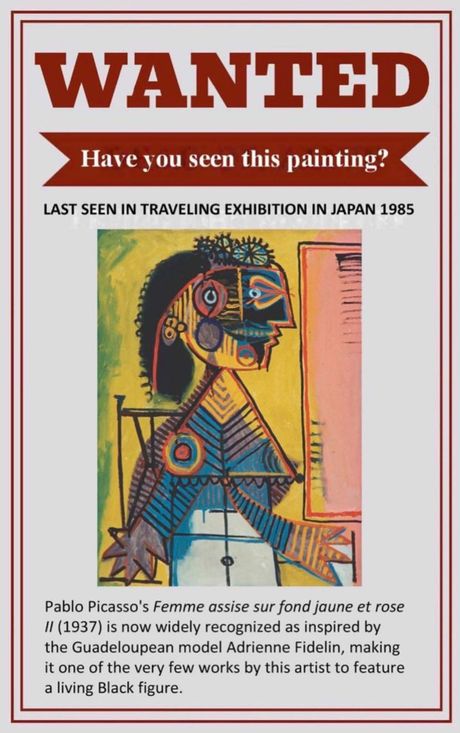
In the summer of 1937, surrealists go on vacation together in the south of France. Their holiday photos have since become art history. Lee Miller and Roland Penrose were there and so were Dora Mar and Pablo Picasso, the Éluards, and Man Ray and Guadeloupean dancer and model Adrienne Fidelin. Fidelin was a regular in this circle for years, although barely mentioned in the surrealists’ written accounts.
One person who gave it more than a passing mention was British artist Eileen Agar (also a member of this holiday crew). Among other things, Hagar’s autobiography recounts that when Fidelin first met Picasso, she “came up to him, threw her arms around his neck and said: ‘I heard that you were a pretty good painter'”. What Agar did not write, and perhaps did not know, is that Picasso painted a portrait of Fidelin that summer.
He was not the only one fascinated by the lively Fidelin. The same year, Fidelin won over Harper’s Bazaar readers in probably the first time a black model has appeared in a major American fashion magazine. She also appeared in over 400 photographs of her lover of five years, Man Ray, and photos of Penrose, Miller, Agar and Wols. So, as Wendy Grossman, a Man Ray scholar researching Fidelin, was browsing snapshots from the summer of 1937, it occurred to her that there might be another kind of memory. “I kept saying, there must be a Picasso painting, or a drawing or something of her,” Grossman says, aware that Picasso painted everyone in this group.
She thought it would be like finding a needle in a haystack, but it was easy because Picasso recorded the dates of his works (not just their year). She looked around in the summer of 1937 and when she saw Seated Woman on Yellow and Pink Background, II (1937), she knew she had found Fidelin because a certain photograph of Man Ray was nearly identical. In it, a naked Fidelin stands against a wall, holding a ridged washboard.
“The visual characteristics clearly show that this is a woman of color – the texture of her hair, her black face,” Grossman says. “But there are two or three coups that completely did it.” Picasso kept Woman sitting in his personal collection until his death, along with two vintage prints of Man Ray’s photograph which Grossman believes to have inspired. Another print of the photograph, in an old auction record, was signed by Man Ray and inscribed “arr Picasso”. “Man Ray says there’s a relationship with Picasso,” Grossman says.
She had found Fidelin on a canvas, only to discover that no one knew where the painting was. THE Maya Picasso recently deceased (daughter of Picasso and Marie-Thérèse Walter) inherited it and showed it for the last time in a traveling exhibition of her collection in 1985 in Japan. Now, a social media campaign led by Grossman and media professional Marie Emedi, nicknamed “Finding Ady”, searches for it in the hope of exposing it and reintegrating the story of Fidelin into the history of art.
“It’s more important than just finding a missing Picasso painting,” says Emedi. “I’m sure whoever has it knows it’s a Picasso, but hopefully with more exposure he realizes how important what he’s sitting on is.”
Finding Ady launched in early January and was promoted by the likes of director Spike Lee, who became interested in Fidelin after The New York Times published a late obituary for her Last year. As the campaign continues, they have seen growing interest, but no leads yet.
“The search for Picasso’s missing painting is the story of Ady’s search,” Grossman says. “The painting’s disappearance or lack of recognition, the fact that no one ever recognized who it was and that it was so out of circulation and out of conversation, is similar to how Ady herself has gone.”
